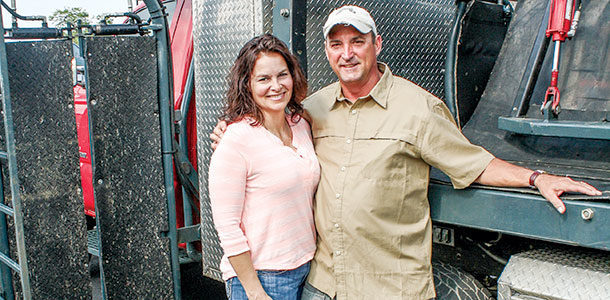For 25 years, Jim Hooper has canvased the south-central Minnesota countryside as a hoof health professional. Coming from a family of hoof trimmers, Hooper is passionate about his work and takes seriously his role in improving animal health and well-being on the dairies he trims.
“I don’t work for the farmer; I work for the cow,” Hooper states.
He takes this cow-centered approach each day as he hits the road, visiting dairy clients of all sizes within a multi-county radius of Jordan, Minnesota, where his average herd size is 125 cows.
As Hooper reflects over a quarter-century trimming hooves, he shares with Progressive Dairyman Editor Peggy Coffeen a few of the essentials he has come to rely on in order to get the job done.
1. Family support
“I couldn’t do this without my wife, Mary, and family,” Hooper says, thanking them for their tolerance of hoof chips in washers and dryers, smelly hands, dirty trucks and long work days, as well as his children, who have all helped him over the years.
“The farmers are our family too,” he adds. “I have a handful of three-generation farms.”
2. Updated equipment
Hooper recalls his early days in the hoof trimming business, when the only tools he carried were a nipper, knife and rasp.
“On a long day, I would trim 12 cows,” he recalls. “Today, I can do 40 cows by 3 p.m.”
Gone are the days of hand-cranking feet one by one. A tip-over chute and chipper wheel speed up the process. While he appreciates the efficiency modern technology affords, he sees even greater benefits for the cow.
“I trim now in a way that is less stressful on the animals and on me as an operator,” he adds.
3. Continuing education
Even with years of trimming under his belt, Hooper never stops learning. Attending events sponsored by the Hoof Trimmers Association, such as the Hoof Health Conference, provide him with knowledge from the leading experts in both academia and industry while serving as opportunities to find out about new technologies and advancements in the field.
“The sessions are great, and I learn even more by looking at the new equipment, talking to the people who run it and being around people who aren’t afraid to share their knowledge,” he says.
4. An integrated farm team
Hooper realizes his role on dairies involves other players: the farmer, vet, nutritionist and herdsperson. He finds great benefit in having conversations with these team members to share ideas and build trust among one another.
This dynamic is one that has evolved since the beginning of his career. At that time, cows were only producing 12,000 pounds of milk each year, and less trimming was required. Most conversations were only had with the farmer.
Now, as dairies grow larger, more people are involved in managing herds, and the demands placed on the dairy cow to produce milk are much greater. Hooper has adapted his approach to accommodate this change.
5. Networking with other hoof trimmers
Hooper never shies away from an opportunity to talk to another hoof-trimming peer.
“My brother is my mentor, along with other trimmers like Ladd Siebert and Vic Larson,” he said. “But I always seem to get something out of any conversation with other hoof trimmers – whether they have been trimming for two years or 50 years.” PD
PHOTO
Jim Hooper, pictured with his wife Mary. Photo by Peggy Coffeen.

Peggy Coffeen
Editor
Progressive Dairyman







